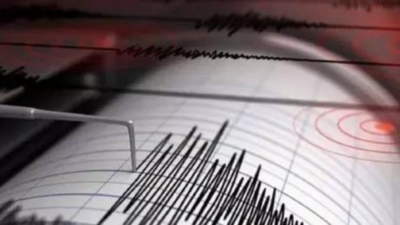
NEW DELHI: A 3.7-magnitude earthquake tremors were felt in Delhi-NCR on Friday evening, a day after a magnitude 4.4 quake struck the region. According to the National Centre for Seismology, the epicentre of the earthquake was recorded at Haryana’s Jhajjar. Even on Thursday, Jajjar was the origin of the quake.“EQ of M: 3.7, On: 11/07/2025 19:49:43 IST, Lat: 28.68 N, Long: 76.72 E, Depth: 10 Km, Location: Jhajjar, Haryana,” NCS posted on X.Earlier this year, on February 17, an earthquake shook the Delhi-NCR region. The quake, with a magnitude of 4.0 and a depth of 5 kilometres, struck at 5.36 am, according to the National Center for Seismology (NCS). Strong tremors startled residents, many of whom rushed out of their homes in fear. The NCS reported the epicentre was located 9km east of New Delhi, with coordinates at latitude 28.59°N and longitude 77.16°E. The agency posted the details on X shortly after the quake. Delhi falls under Seismic Zone IV, as per the Delhi Disaster Management Authority. This classification marks the region as a “High Damage Risk Zone,” indicating a significant chance of moderate to strong earthquakes.Why is Delhi vulnerable?
- Delhi lies close to active fault lines near the Himalayan belt, one of the world’s most seismically active zones due to the collision of the Indian and Eurasian tectonic plates.
- The region has witnessed tremors from both local epicentres (like Jhajjar or Rohtak in Haryana) and distant quakes in Himachal, Nepal, or Afghanistan.
- The city’s high population density, unregulated construction, and ageing infrastructure further raise the potential for damage.







